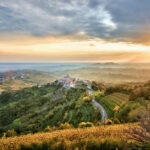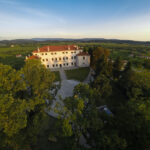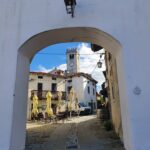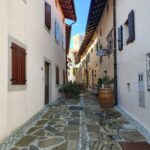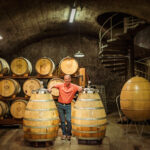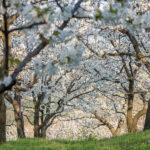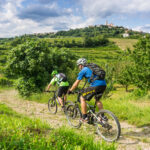Brda, Slovenia
The area of the municipality Brda with its some 72 square kilometres forms a “small pocket” across the river Soča, immediately bordering the Italian region Collio. The municipality has about 6.000 inhabitants within 45 villages and hamlets. Due to its proximity to the border, insufficient infrastructure and the political loss of former markets, it was a disadvantaged area after the Second World War with its population rapidly declining. The earthquake in 1976 and the subsequent destruction represented its absolute low point.
Simultaneously, this incisive incident became the initial spark for reorientation in regards to the development and renewal of Brda. The construction of the Osino road across Italian lands as well as the opening of the border after the founding of Slovenia became additional milestones on the road to positive development within the region. In 1994, the sovereign municipality Brda was founded and offered opportunities for self-definition and new re-orientation: a vision of an eco-friendly and citizen-oriented municipality was conceived, and has since been executed in an exemplary manner. The focus on inherent strengths such as viticulture and winemaking as well as olive and fruit farming in combination with soft tourism has visibly paid off.
The foundation for these developments were, and remain, the directories and measures conceived in collaboration with diverse interest groups, resulting in widespread support from the population. Thereby Brda established itself as a world-class wine region and a high-end culinary destination. The municipality is also characterized by its excellent transnational activities, not least its collaborations with Italian partner-cities and the Austrian province Carinthia, which also have a positive influence on its development.
The cultivation of the autochthonous grape variety “Rebula” has greatly contributed to the regions reputation. The vine cellar owned by the Simčič, exemplary for many private initiatives, is integrated beautifully into the landscape and distinguishes itself through its exceptional contemporary architecture. The fusion of wine and art with the use of the cellar as an art gallery is a symbol of innovation. Brda also participates in the “Artists in Residence” initiative, leading many artist to the area and displaying open-mindedness within the area.
Brda goes to great lengths to maintain the cultural landscape with it typical terraces, and to avoid monocultures. The alluring landscape is an important factor in the successful creation of tourism, which is based on an exceptional development: the intensive economic collaboration of vintners, farm holiday providers and inn keepers. This has lead to very strong “soft tourism”.
The village Šmartno, which was severely affected by the 1976 earthquake, was reconstructed with a focus on historic preservation and is now a tourist attraction due to its various cultural and museal activities. The renovation of Villa-Vipolže is a magnificent example of combining the old and the new, thus earning its reputation as the most beautifully renovated Renaissance villa in all of Slovenia. It offers event locations with a unique flair for wine presentations or other events, as does the similarly renovated Castle Dobrovo,
A particularly meaningful project was the establishment of the Brda region and the wine region Collio Goriziano as UNESCO world heritage. In 2020, the Brda region was also included in the list of the 100 best “Sustainable Tourism Destinations”.
Major improvements to infrastructure, such as the supply and disposal of water, were made; a passive house kindergarten constructed, and numerous projects to improve energy efficiency were undertaken communally. Another institution worth mentioning is the intergenerational youth center, which is explicitly open to senior citizens and allows for interaction through workshops, seminars and other events. To round off this bundle of measures taken to ensure positive developmend of the municipality, several initiatives concerning mobility should be mentioned: new cycling and hiking paths were installed, and a hop-on/hop-off bus system was established for both tourists and locals.
Evaluated: 2020

